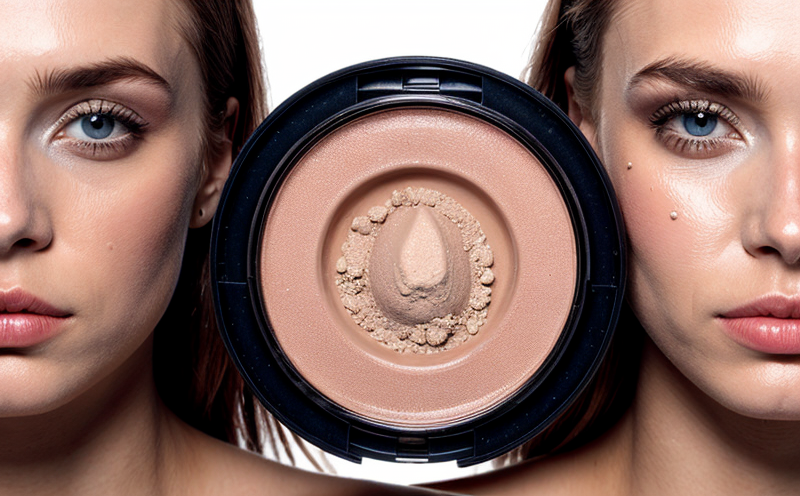Copper Content Testing in Cosmetic Creams
When it comes to ensuring the safety and quality of cosmetic creams, identifying and managing heavy metal content is crucial. Copper is one such heavy metal that can have significant implications for both product safety and consumer health. This service focuses on the precise measurement and control of copper levels in cosmetic creams. By adhering to stringent testing protocols and using advanced analytical instruments, we ensure accurate and reliable results.
The process involves meticulous sample preparation, where small quantities of cream are taken and subjected to digestion procedures to release any bound copper ions into solution. This allows for a more accurate measurement without interference from other compounds present in the cosmetic matrix. Once prepared, the samples undergo instrumental analysis using Inductively Coupled Plasma Mass Spectrometry (ICP-MS), which provides high sensitivity and precision.
The importance of this testing cannot be overstated, especially given recent regulatory updates that have placed stringent limits on heavy metal content in cosmetics. Regulatory standards such as ISO 21973-4:2020 provide a framework for these measurements, ensuring consistency across laboratories worldwide. By adhering to these guidelines, our laboratory ensures compliance with international norms and delivers accurate results.
Our team of experienced chemists and technicians ensure that every test is conducted under controlled conditions, minimizing the risk of contamination or error. This attention to detail not only guarantees accuracy but also builds trust with our clients who are responsible for maintaining high standards in their products.
The significance of copper content testing extends beyond mere compliance; it plays a vital role in protecting consumer health and safety. Excessive levels of copper can lead to irritation, allergic reactions, or even more serious health issues if ingested through skin contact or absorption. By conducting regular copper content tests on cosmetic creams, manufacturers can identify potential risks early on and take corrective action where necessary.
Our commitment to quality is reflected in the use of state-of-the-art equipment and adherence to industry best practices. This ensures that our clients receive accurate data that they can rely upon when making decisions about their products. Whether you are a small startup or a large corporation, we offer personalized solutions tailored to meet your specific needs.
In summary, copper content testing in cosmetic creams is an essential aspect of ensuring product safety and compliance with international standards. Our laboratory offers this service with precision and reliability, providing peace of mind for those responsible for maintaining high-quality products.
- Regulatory Compliance: Ensures adherence to international standards like ISO 21973-4:2020
- Precision Measurement: Utilizes advanced ICP-MS technology for accurate results
- Safety Assurance: Protects against potential health risks associated with high copper levels in cosmetics
Applied Standards
In the realm of cosmetic product development and quality assurance, compliance with international standards is paramount. For copper content testing specifically, several authoritative documents provide comprehensive guidelines that laboratories must follow to ensure accuracy and reliability:
- ISO 21973-4:2020: This standard covers the determination of heavy metals in cosmetic products. It specifies methods for sampling, preparation, and analysis using ICP-MS.
- ASTM D6882: Although more focused on biodegradable plastics, this document provides a framework that can be adapted for testing metallic contaminants in various materials, including cosmetics.
- EN 14795:2013: This European norm sets out requirements for the labeling of cosmetic products regarding their safety and quality. Compliance with these labels often includes ensuring heavy metal content does not exceed specified limits.
By leveraging these standards, our laboratory ensures that all copper content tests conducted meet industry benchmarks and are accepted internationally. This consistency helps build trust between manufacturers and regulatory bodies while providing transparent data for consumers.
Quality and Reliability Assurance
At our laboratory, ensuring the highest levels of quality and reliability is a cornerstone of our operations. We pride ourselves on delivering consistent, accurate results that meet or exceed international standards. To achieve this, we have implemented rigorous quality control measures throughout each stage of testing:
- Sample Preparation: Each sample undergoes thorough preparation to ensure uniformity and consistency in the test.
- Instrument Calibration: All instruments are regularly calibrated against certified reference materials to maintain accuracy.
- Data Analysis: Our chemists perform detailed data analysis using statistical methods to identify any anomalies or outliers.
- Repeat Testing: In cases where initial results suggest variability, repeat testing is conducted to confirm findings and ensure reliability.
These measures not only enhance the accuracy of our tests but also contribute to building long-term relationships with our clients. We take pride in delivering services that instill confidence and trust in your decision-making processes.





